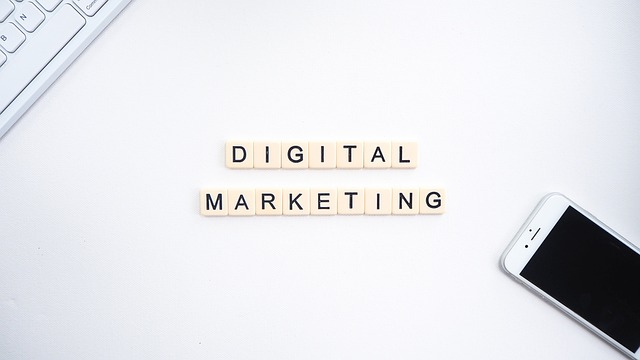The Rise of Influencer Marketing
In today’s digital landscape, influencer marketing has emerged as a powerful tool for businesses, particularly for those operating as side hustles. The essence of influencer marketing lies in partnering with individuals who have a significant following and authority within a specific niche. This method allows businesses to reach a broader audience by leveraging the influencer’s established trust and credibility. For side businesses, capitalizing on this phenomenon can lead to increased brand visibility and attention that may not be achievable through traditional marketing channels.
Imagine a local coffee shop trying to attract younger audiences. Rather than spending on broad advertising channels, the shop connects with a local food vlogger who has a vibrant Instagram following. By showcasing the cozy ambiance and unique brews, the coffee shop gains visibility among potential customers who trust the influencer’s recommendations. This approach elevates a small side business and opens doors to new customers through authentic storytelling and relatable content.
The Unique Benefits for Side Businesses
For those running a side business, influencer marketing presents unique advantages. First, it’s often cost-effective compared to many traditional advertising channels. Many micro-influencers, those with 1,000 to 100,000 followers, are eager to collaborate with brands in exchange for free products, experiences, or nominal fees. This creates an opportunity for side business owners to promote their offerings without breaking the bank.
Moreover, influencer partnerships can provide targeted exposure. Unlike conventional ads that may broadcast to a wide audience with mixed interest, influencer marketing hones in on specific demographics. This precision is particularly beneficial for owners of side businesses who often cater to niche markets. For example, if a side business specializes in vegan skincare products, collaborating with an influencer known for cruelty-free and vegan lifestyles ensures that the promotional efforts resonate with an audience that genuinely cares about these values.
Building Authentic Relationships
Authenticity remains a cornerstone of effective influencer marketing. Consumers today are more discerning and seek genuine connections with brands. This is especially critical for side businesses, which often thrive on personal stories and community engagement. By selecting influencers who truly align with their brand values, side business owners can foster authenticity in their marketing. Customers are likely to engage with brands that exhibit honesty and transparency.
Building these authentic relationships entails a mutual understanding and respect. Side business owners should take the time to research influencers—looking beyond follower counts to understand their engagement rates and audience demographics. Once a partnership is formed, it’s crucial to allow the influencer creative freedom. They know their audience best, and their unique voices can lead to more relatable and engaging content. For instance, an artisan candle manufacturer might collaborate with a lifestyle influencer who can craft a narrative around self-care, using the candles as a focal point. This approach results in content that resonates and feels less like an advertisement and more like a recommendation from a friend.
Effective Strategies for Collaboration
To successfully implement influencer marketing, side business owners need to adopt effective collaboration strategies. First, it’s essential to clearly define goals from the onset. Are you looking to boost brand awareness, increase sales, or grow social media followers? By articulating measurable goals, side business owners can shape influencer campaigns to align with these objectives.
Next, when reaching out to potential influencers, personalize communication. A generic message can come off as disingenuous. Take a moment to explain why you appreciate their work and how it relates to your brand. This level of thoughtfulness sets a positive tone for collaboration. Furthermore, offering something valuable in return—be it monetary compensation, free products, or exclusive experiences—can reinforce the partnership. An influencer is more likely to promote your side business passionately if they feel they gain from the relationship.
Measuring Success and Analyzing Outcomes
After launching an influencer marketing campaign, measuring success becomes a vital next step. Side business owners need to track key performance indicators (KPIs) that align with their initial goals. For instance, if increased website traffic was the goal, tools like Google Analytics can provide insights into referral traffic from influencer posts.
Additionally, social media analytics tools offer metrics related to engagement, follower growth, and reach. It’s also essential to solicit feedback from the influencer. Understanding how their audience reacted to your product or service provides invaluable insights for refining future campaigns. This evaluation process encourages continuous improvement in your marketing strategies and adjusts targeting efforts, ensuring that each collaboration builds on the last.
Challenges of Influencer Marketing for Side Businesses
While influencer marketing holds immense potential, it also presents challenges. For side business owners, one common obstacle is finding the right influencer. With countless options available, navigating this landscape can feel daunting. It’s crucial to ensure that the influencer’s audience aligns with your target market. Misalignment can lead to wasted resources and ineffective campaigns.
Another challenge is dealing with fluctuating trends and audience preferences. What works today might not resonate tomorrow. It’s essential for side businesses to remain adaptable and proactive in understanding current trends within their niche. Keeping an ear to the ground, whether through social media monitoring or industry publications, allows side business owners to stay ahead and pivot their strategies as needed.
Conclusion: Embrace Influential Partnerships
Influencer marketing represents a dynamic avenue for promoting side businesses in today’s digital age. Its unique benefits, such as cost-effectiveness, targeted exposure, and the opportunity to build authentic relationships, can catalyze growth and engagement. By adopting effective collaboration strategies and addressing challenges head-on, side business owners can successfully leverage influencer partnerships. Whether it’s through genuine storytelling, strong analytics, or adaptable approaches, embracing the influence of marketing leads to enhanced visibility, customer trust, and ultimately, business success.
FAQ
- What is influencer marketing?
- Influencer marketing is a form of digital marketing that involves collaborating with individuals who have a significant following on social media or other platforms to promote products or services. These influencers have the power to influence their audience’s purchasing decisions due to their credibility and authority.
- How can influencer marketing benefit my side business?
- Influencer marketing can benefit your side business by increasing brand visibility, attracting new customers, and providing access to targeted audiences. Authentic partnerships can create relatable and engaging content that resonates with potential clients.
- Do I need a large budget for influencer marketing?
- No, you don’t require a large budget for influencer marketing, especially for a side business. Collaborating with micro-influencers can be cost-effective. Many are enthusiastic about working with small brands in exchange for products or experiences.
- How do I find the right influencer for my business?
- To find the right influencer, research individuals within your niche. Look for influencers whose values align with your brand and who have an engaged audience that matches your target demographic. Tools like social media platforms and influencer databases can aid in this process.
- How do I measure the success of my influencer marketing efforts?
- You can measure the success of your influencer marketing efforts by tracking key performance indicators like website traffic, sales conversions, social media engagement rates, and growth in follower counts. Analyzing this data helps evaluate the impact of your campaigns and make necessary adjustments.



